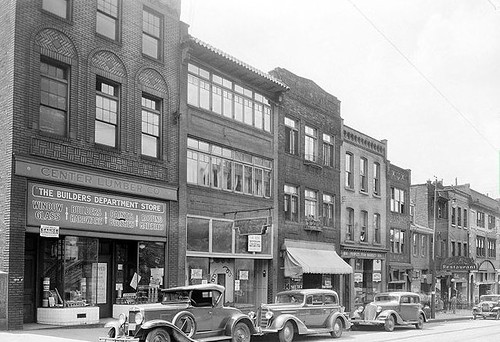I have a hard time reading a lot of the smart growth etc. blather about how to do revitalization based on people's very recent experiences in DC--recent defined as the last few years, since 2004-2006--because DC (and Brooklyn) are outliers nationally in terms of cities that have gone through post WWII decline, and are coming back.
Most other cities have a much harder time and the proscriptions are harder to realize and take even longer. And in DC it took about 25 years after the first opening of the subway system before you could really start to see positive revitalization energy deriving from transit access and proximity. But these days DC is one of the strongest real estate markets in the world, and in the U.S. In most U.S. cities, there is minimal population in-migration--most center cities continue to shrink--and limited amounts of new construction.
These are two photos of the 1800 block of Centre Avenue in Pittsburgh's Hill District, from 1930 and today, from the
Pittsburgh Post-Gazette's "
Storefront Project." (Current photo byRebecca Droke of the PPG; historic photo from the University of Pittsburgh.) Tell me "experts" based on your very recent in DC experience, what would you do there?
Labels: urban design/placemaking, urban history, urban renewal, urban revitalization





0 Comments:
Post a Comment
<< Home